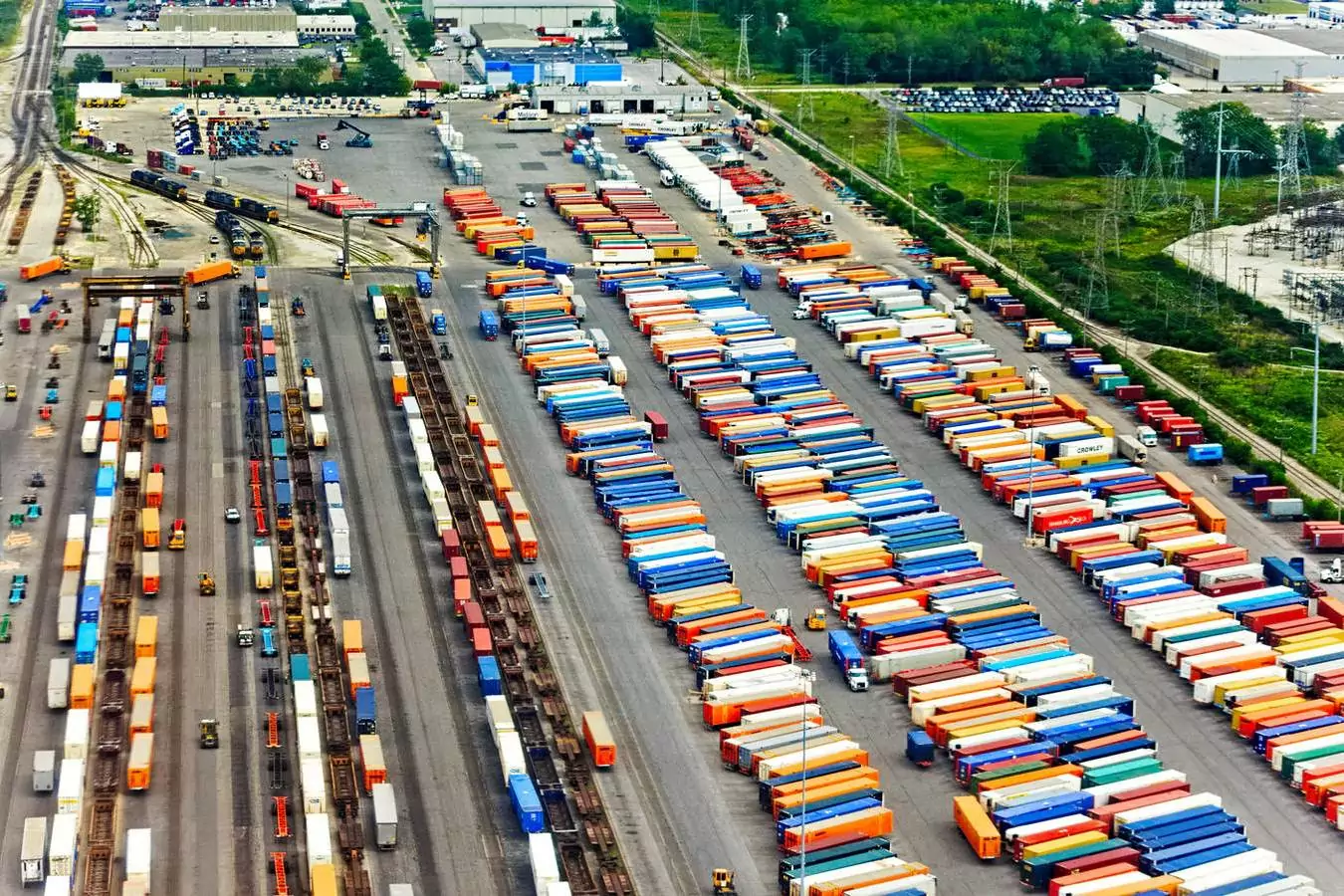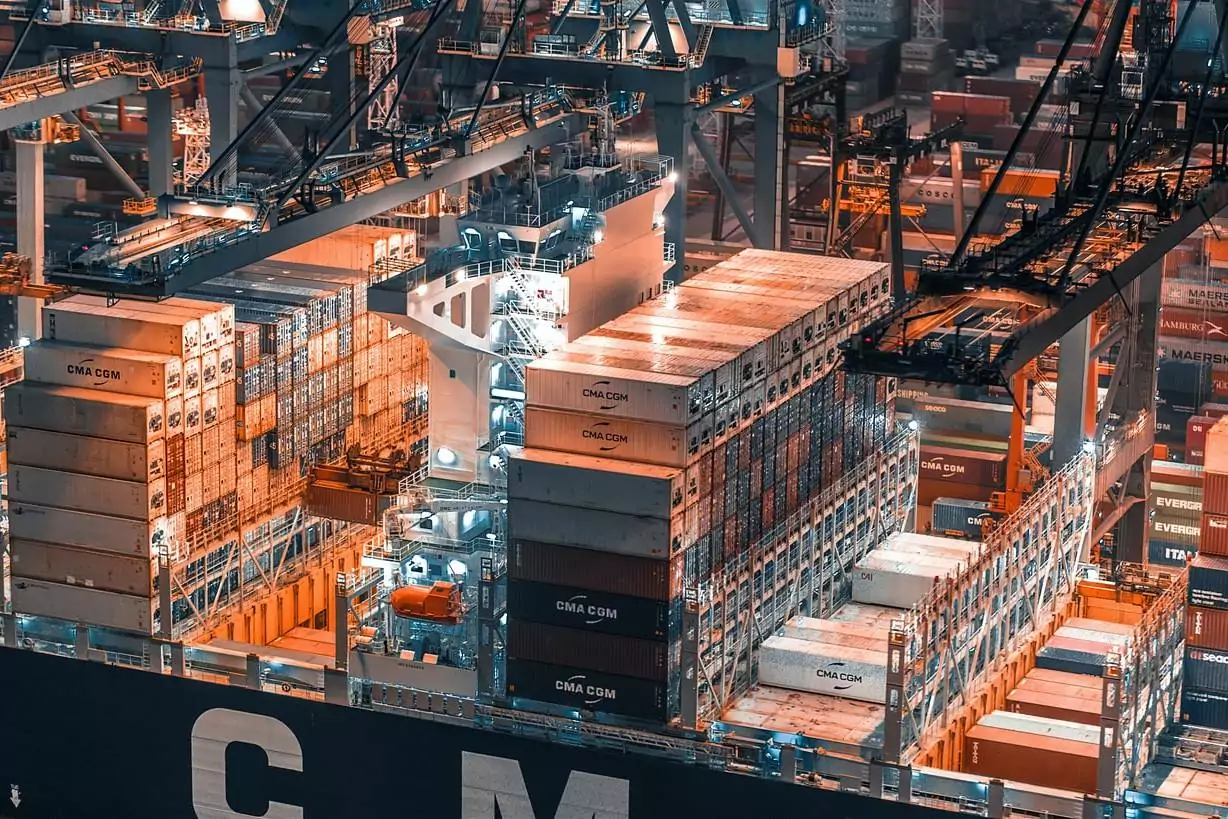What are you looking for?
21. June 2024
TUP.SML ensures smooth intralogistics processes for Lusini
The Lusini Group is one of the leading hotel and catering suppliers in the non-food sector in Europe. Founded in 1987 as Hotelwäsche Erwin Müller, the group of companies headquartered in Wertingen, Bavaria, can look back on decades of history and…
31. May 2024
What is warehousing? Overview and definition
In German, the English term “warehousing” is increasingly being used, which is in it origin language describes warehouse logistics in general. In German-speaking Regions, however, it is usually not used as a pure Anglicism for existing…
28. March 2024
PPE in logistics – protective and safety gloves
The logistics industry in Germany is the third largest economic sector after the automotive industry and retail. In terms of the number of employees, it is also in third place after healthcare and trade, with over three million people in the…
26. September 2023
AutoStore: Storage technology from Norway
AutoStore is a Norwegian storage technology and, according to the company of the same name, is especially suitable for use as an automated small parts storage. The respective storage system dispenses with classic racks; instead, modular containers…
8. September 2023
Advance Shipping Notice
An Advance Shipping Notice (ASN), also advice note or avis, is a piece of preliminary information on the delivery of goods or the delivery of payment. In the following, this article will use the abbreviation ASN. ASN in the movement of goods Due to…
15. June 2023
Personal Protective Equipment (PPE) in the Warehouse and in Intralogistics
Personal Protective Equipment (PPE) in the Warehouse and in IntralogisticsAccording to the PPE Usage Ordinance, personal protective equipment is used by employees to protect themselves against hazards to their health and safety by using or wearing…
28. December 2022
Industrial trucks – definition, function and variants
Industrial trucks, also known as ground conveyors or floor conveyors, are vehicles used to transport inventories and materials within a company - horizontally and at ground level. (Vertically) transporting equipment that is suspended from the…
7. September 2022
Definition and overview for the use of digital twins in logistics
A digital twin is the image of a real object or process in virtual/digital space. In this type of modeling, digital twins are formed from data and algorithms. They can be supplied with historical as well as real-time data by means of sensors and…
21. July 2022
A new location and a cross-site software package for Canyon
TUP implemented two large-scale projects for the bicycle manufacturer Canyon. In a short time, a new production site with optimized intralogistics was created, laying the foundation for state-of-the-art manufacturing and the associated growth…
22. June 2022
Breuninger combines six locations in a state-of-the-art multi-channel warehouse
Branch store delivery and direct customer delivery have their very own requirements. This duality must also be reflected in intralogistics. A new, large distribution center was to consolidate the six previous locations of the fashion company…
30. May 2022
Overview of LogiMAT – Trade Fair for Material Flow and Distribution
Logimat is a trade fair for the fields of material flow, information technology and distribution. It takes place annually in Stuttgart and is the largest logistics trade fair in Europe. Since 2014, there is also an annual edition in China, first in…
14. April 2022
Advantages and definition of the transhipment type cross docking
There are various handling methods for inventory in the shipping area. One of these handling methods is called cross docking. The special feature of this type of transshipment is that storage is not required. Instead, the inventory is already…
21. January 2022
Definition of replenishment in transport and intralogistics
Replenishment is a fundamentally important process in today's enterprise resource planning. With the best possible integration into the existing warehouse management, it contributes significantly to the efficiency of the material flow. Replenishment…
15. November 2021
Microfulfillment – definition and overview
Microfulfillment describes the decentralized and also customer-oriented execution of processes such as warehousing via picking, packing and outgoing goods to shipping in much smaller premises than at usual fulfillment centers, distribution centers.…
7. September 2021
Overview of VDA 5050 – the VDA communication interface for AGVs
VDA 5050 is the definition of a communication interface for Driverless Transport Systems. Currently (as of August 2021), the interface is in version 1.1 from June 2020 and was defined in a cooperation between the German Association of the Automotive…
7. September 2021
Overview of VDA 5050 – the VDA communication interface for AGVs
VDA 5050 is the definition of a communication interface for Driverless Transport Systems. Currently (as of August 2021), the interface is in version 1.1 from June 2020 and was defined in a cooperation between the German Association of the Automotive…
6. August 2021
Regulations and labeling for the transport of dangerous goods by truck
Around the world, hazardous goods are transported every day. For Germany alone, the total volume transported in 2017 was reported to be around 310 million tons, of which road transport accounted for almost half, far ahead of rail and shipping.…
1. July 2021
The factor Light in warehouse and logistics
The illumination of distribution centers is a rather rarely addressed aspect of warehousing. The lighting factor is not directly related to intralogistics processes and is therefore often taken for granted. Nevertheless, it can be considered an…
25. May 2021
What is an item number? Development, areas of application and definition
An item number is used to differentiate, categorize and uniquely identify retail items. It is assigned only once for a specific article or a specific variant of the corresponding article. This distinctiveness and uniqueness refers to the underlying…
14. May 2021
Overview and definition of the identification technology barcode
Coded information can be stored in many different ways. In addition to mechanical, magnetic and electronic storage, a conventional type of storage has also become established, not least due to the further development of optical reading systems…
20. April 2021
Definition and overview of the logistic process shipping and the common shipping types
What is included in the business process of shipping?The transport of goods from a company’s own warehouse to its customers is referred to as shipping; it is therefore the transport of goods from one place to another. Within a value chain,…
24. February 2021
Overview of the term logistics – definitions, specializations and job descriptions
Table of contents Introduction Logistics definition and the 6 R Areas in logistics Processes in logistics Occupations in logistics Summary Introduction The term logistics commonly refers to the planning, management and control of tangible as well…
9. February 2021
Definition of the software principle ‘clean architecture’
Clean architecture' is an IT application implementation style. At the heart of clean architecture and similar styles such as hexagonal architecture is the ability to test and develop the business application independently of the rest of the…
1. February 2021
Definition and advantages of context-aware frontend architecture
Reasons for context-aware frontend architecture User interfaces must meet more and more diverse requirements. As digital infrastructures undergo constant evolution and transformation, the cycles in which software must be adapted are also shortening.…
16. December 2020
Definition – tugger train and tugger train systems
Tugger trains are means of transport that are used in intralogistics processes, primarily in manufacturing companies. Other common terms include logistics trains or tugger train systems. Like other industrial trucks, they are used for the internal…
12. October 2020
What is Business Intelligence – structure, requirements, advantages and disadvantages
Business Intelligence - Definition Traditionally, Business Intelligence (BI) is a collective term for methods and processes for the systematic analysis of data. Companies use this instrument to make their business processes and customer and supplier…
8. September 2020
Key figures and key figure systems
Table of contents for easier navigation of the post: Key figures Functions of key figures Structure of key figures and key figure systems Traditional metrics Traditional metrics systems – The DuPont System of Financial Control Traditional…
27. July 2020
Definition of business rules and fields of application of BRMS solutions
Business rules describe rules that are defined for automated processes or for processes whose degree of automation is to be established or increased. Business rules therefore usually have their background in the field of (business) information…
7. July 2020
Rack zones – Overview
A storage rack, both in intralogistics and retail, can be divided into different horizontal racking zones. This usually results in four racking zones, which are named as follows from bottom to top Bending zone Gripping zone Viewing zone Stretch…
7. May 2020
Single-stage picking – order-oriented, parallel picking
With parallel picking, an order is divided between different picking zones and processed simultaneously. Compared to order-oriented, serial picking, this means the following: Larger orders are split before the picking and carried out in different…
21. June 2024
TUP.SML ensures smooth intralogistics processes for Lusini
The Lusini Group is one of the leading hotel and catering suppliers in the non-food sector in…
31. May 2024
What is warehousing? Overview and definition
In German, the English term “warehousing” is increasingly being used, which is in it…
28. March 2024
PPE in logistics – protective and safety gloves
The logistics industry in Germany is the third largest economic sector after the automotive…
26. September 2023
AutoStore: Storage technology from Norway
AutoStore is a Norwegian storage technology and, according to the company of the same name, is…
8. September 2023
Advance Shipping Notice
An Advance Shipping Notice (ASN), also advice note or avis, is a piece of preliminary information…
15. June 2023
Personal Protective Equipment (PPE) in the Warehouse and in Intralogistics
Personal Protective Equipment (PPE) in the Warehouse and in IntralogisticsAccording to the PPE…
28. December 2022
Industrial trucks – definition, function and variants
Industrial trucks, also known as ground conveyors or floor conveyors, are vehicles used to…
7. September 2022
Definition and overview for the use of digital twins in logistics
A digital twin is the image of a real object or process in virtual/digital space. In this type of…
21. July 2022
A new location and a cross-site software package for Canyon
TUP implemented two large-scale projects for the bicycle manufacturer Canyon. In a short time, a…
22. June 2022
Breuninger combines six locations in a state-of-the-art multi-channel warehouse
Branch store delivery and direct customer delivery have their very own requirements. This duality…
30. May 2022
Overview of LogiMAT – Trade Fair for Material Flow and Distribution
Logimat is a trade fair for the fields of material flow, information technology and distribution.…
14. April 2022
Advantages and definition of the transhipment type cross docking
There are various handling methods for inventory in the shipping area. One of these handling…
21. January 2022
Definition of replenishment in transport and intralogistics
Replenishment is a fundamentally important process in today's enterprise resource planning. With…
15. November 2021
Microfulfillment – definition and overview
Microfulfillment describes the decentralized and also customer-oriented execution of processes such…
7. September 2021
Overview of VDA 5050 – the VDA communication interface for AGVs
VDA 5050 is the definition of a communication interface for Driverless Transport Systems. Currently…
7. September 2021
Overview of VDA 5050 – the VDA communication interface for AGVs
VDA 5050 is the definition of a communication interface for Driverless Transport Systems. Currently…
6. August 2021
Regulations and labeling for the transport of dangerous goods by truck
Around the world, hazardous goods are transported every day. For Germany alone, the total volume…
1. July 2021
The factor Light in warehouse and logistics
The illumination of distribution centers is a rather rarely addressed aspect of warehousing. The…
25. May 2021
What is an item number? Development, areas of application and definition
An item number is used to differentiate, categorize and uniquely identify retail items. It is…
14. May 2021
Overview and definition of the identification technology barcode
Coded information can be stored in many different ways. In addition to mechanical, magnetic and…
20. April 2021
Definition and overview of the logistic process shipping and the common shipping types
What is included in the business process of shipping?The transport of goods from a company’s…
24. February 2021
Overview of the term logistics – definitions, specializations and job descriptions
Table of contents Introduction Logistics definition and the 6 R Areas in logistics Processes in…
9. February 2021
Definition of the software principle ‘clean architecture’
Clean architecture' is an IT application implementation style. At the heart of clean architecture…
1. February 2021
Definition and advantages of context-aware frontend architecture
Reasons for context-aware frontend architecture User interfaces must meet more and more diverse…
16. December 2020
Definition – tugger train and tugger train systems
Tugger trains are means of transport that are used in intralogistics processes, primarily in…
Also available in Deutsch (German)































